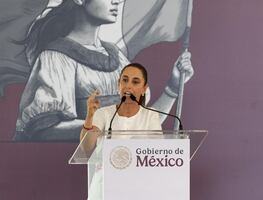Más Información

Osiel Cárdenas, exlíder del Cártel del Golfo, recibe auto de formal prisión; enfrentará juicio por homicidio

Jóvenes mexicanos pasan más de 2 mil horas al año en el teléfono; OCDE alerta sobre su impacto en la salud mental

Sergio Gutiérrez Luna destaca aprobación de 25 reformas en la 66 Legislatura; "Un logro histórico para la 4T", señala

Secretario de Agricultura reafirma defensa del maíz blanco; "Seguiremos apoyando la producción nacional no transgénica", afirma

¿Maíz transgénero? Rubén Rocha corrige desliz durante discurso en Sinaloa; destaca importancia del maíz blanco

Sheinbaum asegura apoyo total a Sinaloa para enfrentar violencia; "Nunca los vamos a dejar solos, aquí está la presidenta"
Experts from the National Autonomous University of Mexico (UNAM) have designed a computer program to help children with intellectual and motor disabilities learn to read and write.
In a statement, UNAM stressed that the software is freely accessible and is a tool that encourages users to develop their ability to assimilate the first letters and unite them, and thus form words through sounds, images, and letters.
UNAM explained that the evaluations of this program have already been applied to patients of the Psychopedagogical Attention Program of the Faculty of Higher Studies (FES) Aragón , as well as the Aragon Psychopedagogical Support Center (CAPA) , showing encouraging results.
The inclusive didactic software, handled by Computer Engineering students , is aimed at children with Down syndrome, hyperactivity, attention deficit disorder, asperger, dyslexia, and autism. The computer program could even help adults with intellectual problems as well.
It works with a computer keyboard designed and modified by the students and at a prototype stage, it is an instrument that allows children to relate every word and noise of the animal or object shown on the screen with the initial letter corresponding to the set of keys on the device.
According to the member of the Laboratory of Engineering for Medicine (iMED) , Arcelia Bernal Díaz , the goal is for users to identify each of the letters of the alphabet, learn to write, read, and interact with their environment.
"This technology changes the children’s attitude. They start playing and they learn a little more. After a week of contact with these instruments they begin to interact with the machine; maybe their contact with technology adds a bit of quality to their lives," she said.
The university student explained that this technological development can be used by children from the age of four, as well as young people and adults of any age, even if they do not have any cognitive disability.
dm





